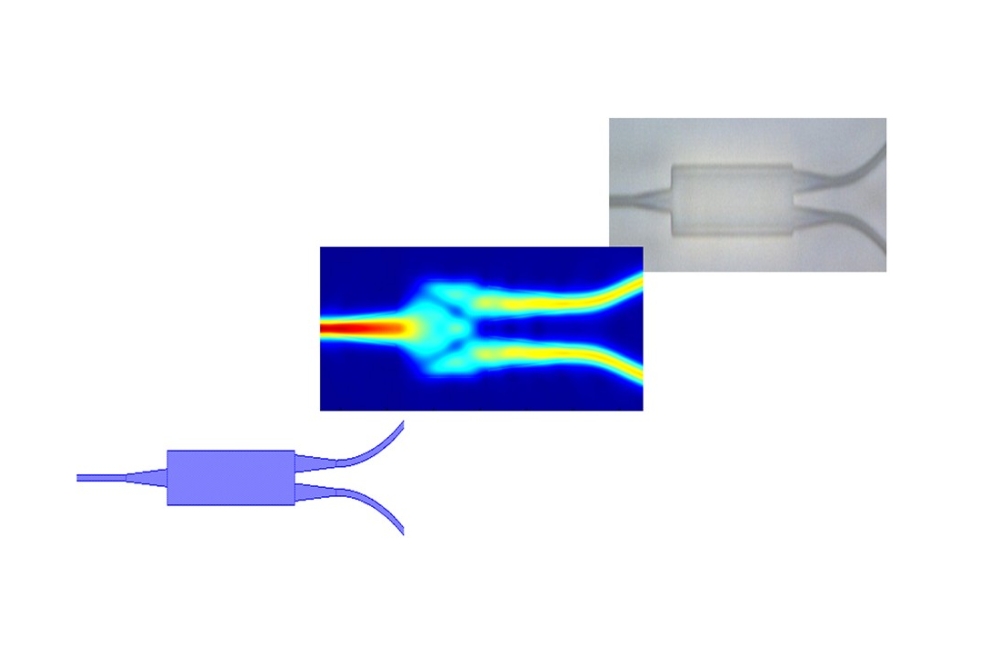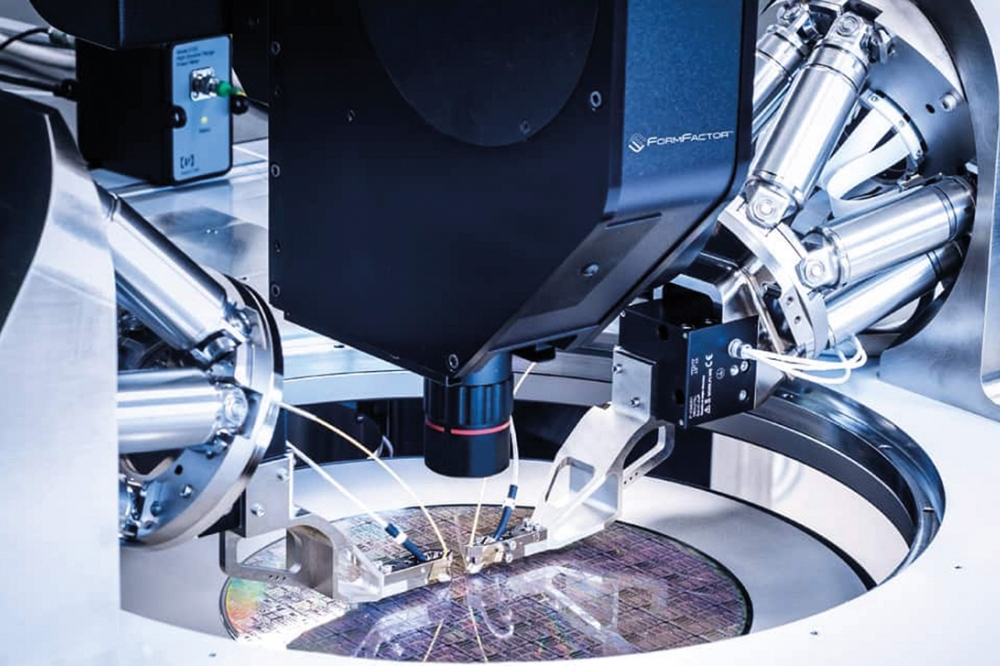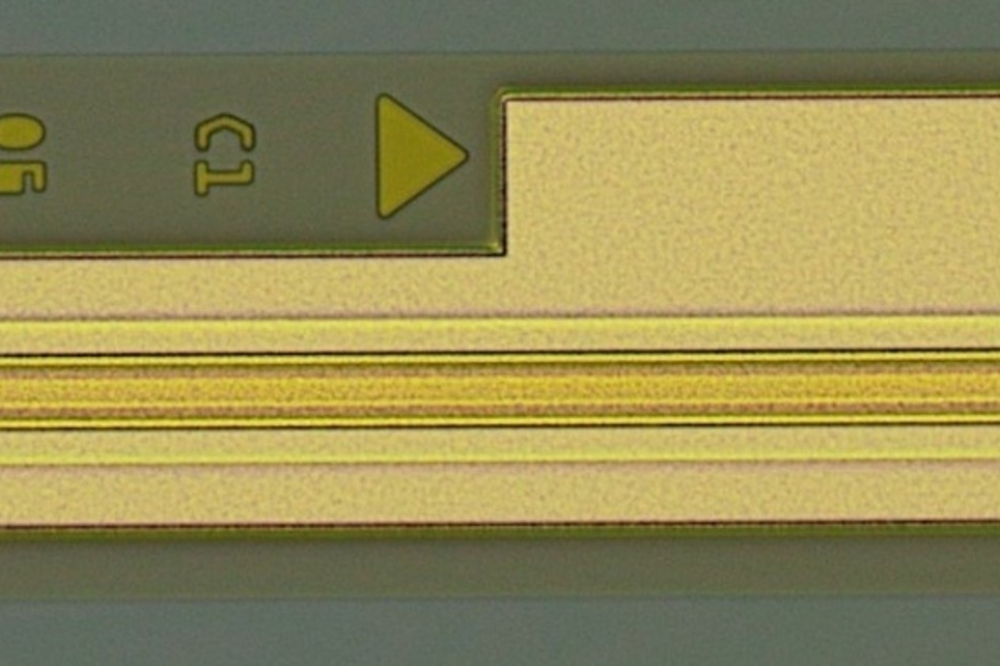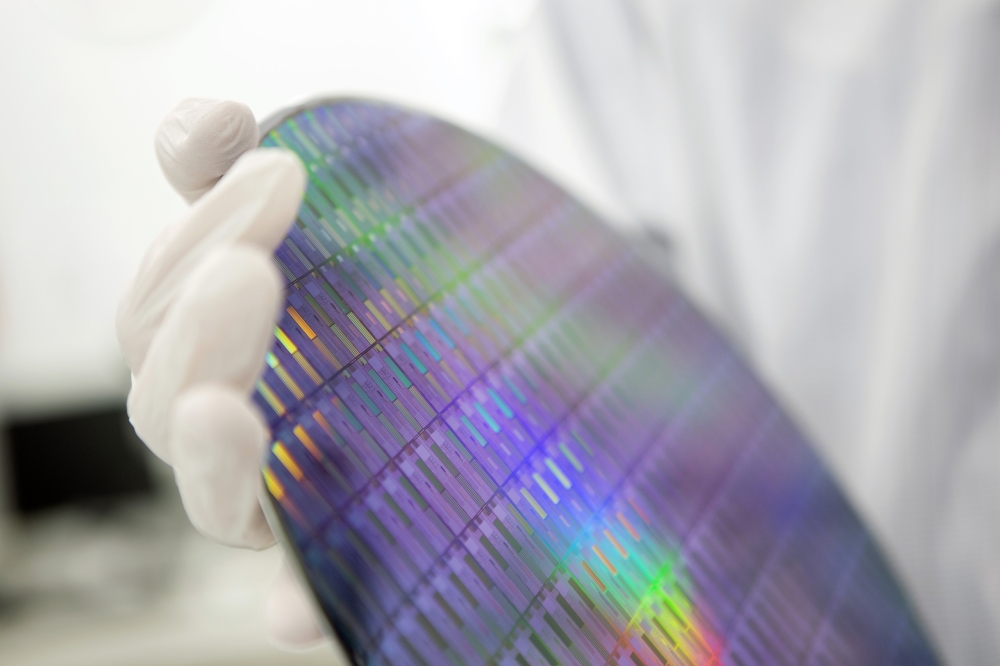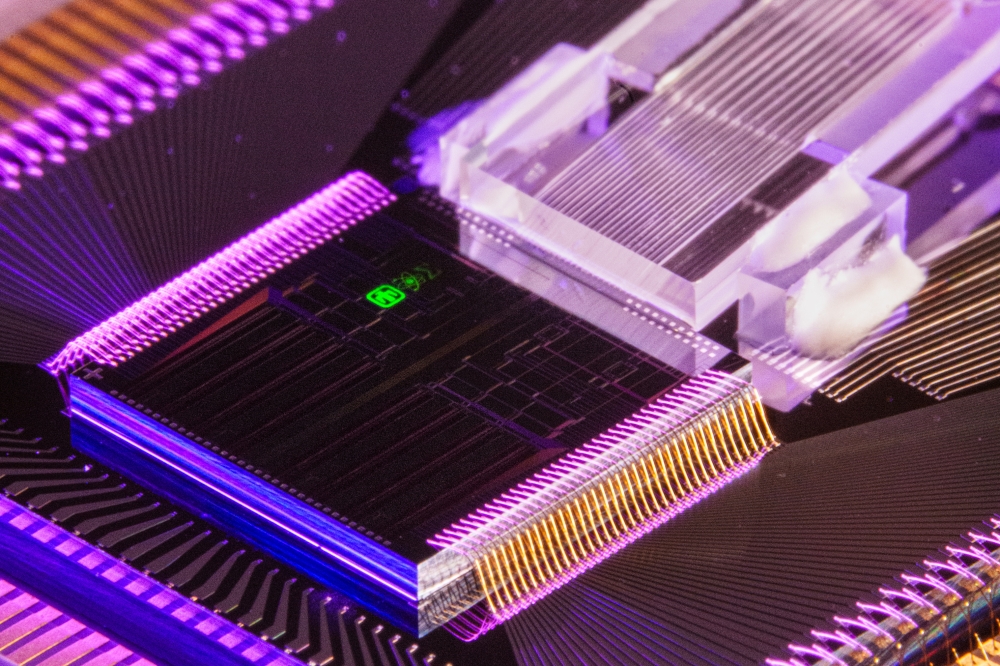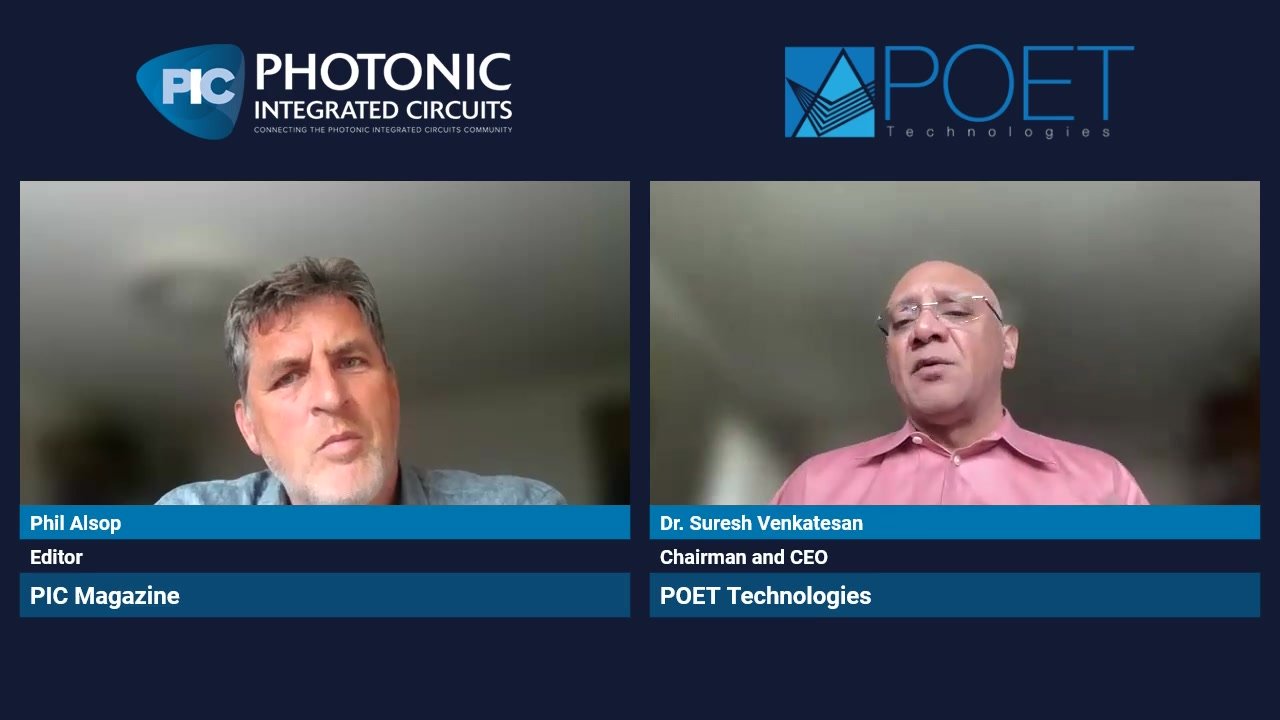Imec and Ghent University show InP laser arrays on silicon

Imec and Ghent University have presented, for the first time, arrays of InP lasers monolithically integrated on 300mm silicon substrates in a CMOS pilot line.
This breakthrough, published in Nature Photonics, provides a path toward high-volume manufacturing of cost-effective photonic integrated circuits (PICs) with monolithically integrated laser sources. Such laser-powered PICs could change the way data is transferred between future logic and memory chips.
Over the past few years, demand for data communication between servers in cloud datacentres has been growing exponentially, following strong growth in social networking, cloud computing and big data applications.
Silicon photonics technology enables cost-effective manufacturing of fibre-optic transceivers, which in turn provides continued scaling of server and datacentre capacity with improved power efficiencies. However, wide-spread adoption of this technology has been hampered in part by the lack of monolithically integrated laser sources.
The integration on silicon of efficient INP based light sources, currently driving long-range telecommunication networks, is known to be very challenging, owing to the large mismatch in crystal lattice constants between both materials.
Imec and Ghent University overcame these structural differences and largely suppressed the detrimental crystal defects that typically form at the interface between silicon and InP. Using a production grade MOVPE growth reactor, InP semiconductor was selectively grown on silicon in a pre-patterned oxide template, realising InP waveguide arrays across the entire 300mm substrate. Subsequently, periodic grating structures were etched in the top layer of these waveguides, providing the optical feedback required for laser operation.
Lasing operation was demonstrated for all tested devices consisting of an array of ten InP lasers. Typical lasing threshold powers of around 20mW were observed at room temperature under optical pumping. Lasing performance showed small variability along the array, illustrating the high material quality of the heteroepitaxial grown InP. In addition, accurate control on the distribution of lasing wavelengths in the array was demonstrated by modifying the grating parameters.
The newly demonstrated approach for integrating lasers with silicon has been carried out in Imec's 300mm CMOS pilot line facility, therefore providing a path to large volume manufacturing. Ongoing research efforts focus on growing more complex layer stacks to enable electrical injection of the lasers and emission in the 1300nm wavelength range, along with integration with silicon based waveguide devices.
This work has been carried out as part of imec's industry affiliation program on Optical I/O, which targets the development of a scalable, silicon-based optical interconnect technology for high-bandwidth chip-level I/O. The work was also partly supported by the European Commission through an ERC starting grant awarded to D. Van Thourhout of Ghent University for research on Ultra Low Power Photonic ICs (ULPPIC). This five year project aims to develop novel active photonic devices with lower power consumption, for integration on next generation electronic and photonic ICs.
Imec's research and development work on Optical I/O is performed in cooperation with key partners in its core CMOS programs including Huawei, GlobalFoundries, Intel, Micron, Panasonic, Qualcomm, Samsung, SK Hynix, Sony and TSMC.














